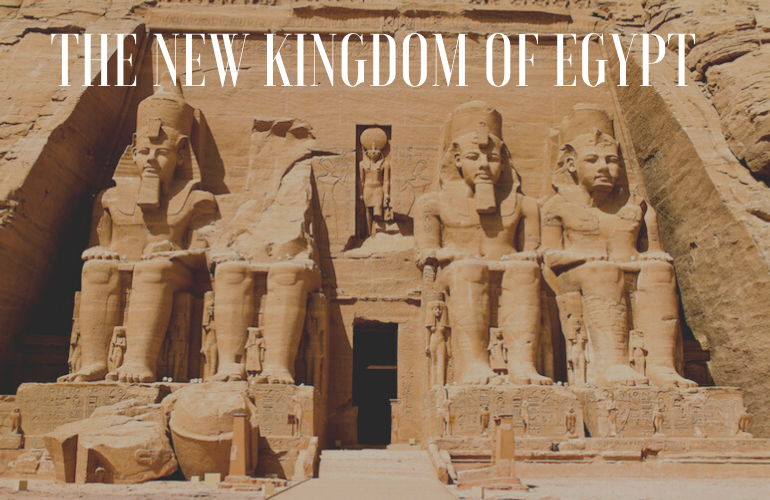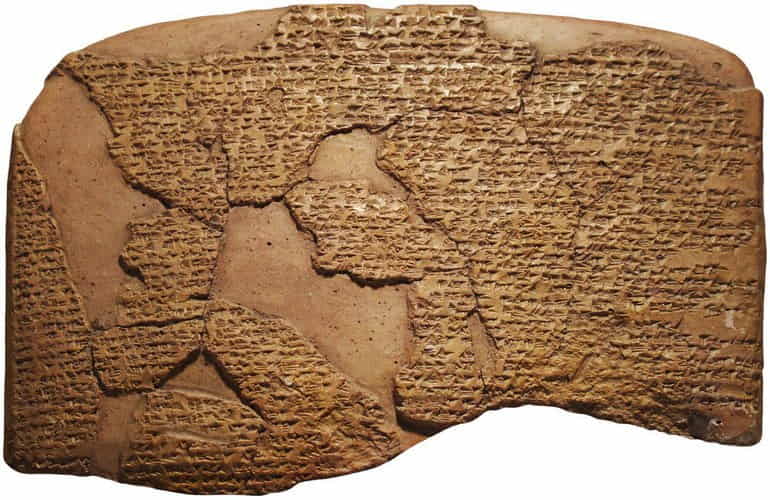The New Kingdom of Egypt
The chronology of the period covers three dynasties and includes two ways of governing. The Eighteenth Dynasty are the heirs of the seventeenth Dynasty of Egypt and range from 1550 to 1295. During the XVIIIth Dynasty, in which the most frequent names are Amenhotep or Thutmose, the capital city changes a lot, from Thebes, the great ceremonial city of religious festivals, to Memphis a century later and to Amarna around 1350 BC, a new city founded that will have the capital city for about 30 years when it is moved again to Memphis. From the nineteenth dynasty onwards, the Egyptian throne will be occupied by military leaders who excel in the army. His first major activity was to be the general of the army. This also influences the fact that the documentation of the period is often military.
The first thing to bear in mind is that the Egypt of the New Kingdom Egypt is the most powerful in its history, especially on a political and military level. it is the most powerful state in the Middle East and North East Africa during the development of the Recent Bronze Age. This power is manifested through its military capacity outside Egyptian territory itself, carrying out various conquests both towards the south and towards the north.
1. Conquests of ancient Egypt in the new kingdom to the south
To the south, the Egyptians lead military campaigns with the aim of reconquering Nubia and subjecting it to their political domination, thus reaching where the ancient Egyptian fortresses of the Middle Kingdom were, with the primary objective of regaining control of the gold mine here. Around 1500 B.C.
2. Conquests of ancient Egypt in the new kingdom north
To the north, Egyptian military campaigns reach the Syrian coast, but instead of destroying it, they leave it intact and resume trade relations with the Syrians. On the other hand, the territory conquered by the Egyptians in Palestine between the 15th and 13th centuries BC was divided into three provinces.

The Peace of Kadesh
The campaigns are gradually diminishing in the second half of the New Kingdom. Of this second half, I highlight above all the conflict that the Egyptians had at the time of Ramses II (13th century B.C.), with the Hittites of the peninsula that is now Turkey. The curious thing is that this confrontation apparently remained in a stalemate, without either party winning, so the peace treaty signed between the Egyptians and the Hittites, the so-called Kadesh Peace, will also be in equal parts. Besides this, there is other evidence to think that this confrontation was a draw: on one hand, the Egyptians did not manage to conquer the city of Kadesh, and on the other hand, Ramses II married several Hittite princesses.

Characteristics of The New Kingdom of ancient Egypt
1-The absolute emphasis on the military capacity of the kings, especially from the Nineteenth Dynasty onwards. It is always presumed in the documentation that they are the best fighters.
2-Relationships with the gods are much more intimate, frequent and every day.
3-The presence of the women of the royal family in the royal documentation changes. With the exception of the reign of Ramses II, the princes are not represented, but the princesses.
4-The monarchs usually marry one of their sisters, a princess. It seems today that this is related to the theology of the monarchy. That is, because they believed themselves to be superior to normal humans, they could break natural laws and make incest as well as polygamy.
5-Several women from the royal family ended up assuming the role of king, although officially there was no title of queen, only that of wives of the king.
Acculturation of ancient Egypt in the new kingdom
From its recovery and conquest, a harder policy and relations were created between Egypt and Nubia. We are now talking about a colonial policy in which the Egyptian ideology is to be introduced into Nubian society. In order to do this, they carried out ideological acculturation, based on various principles. First of all, temples were created in Nubian territory for the Egyptian deities, creating around them a small city, which would be organized just like the Egyptian one.
Egyptian officials and mechanisms of loyalty
The Egyptians put into practice in the New Kingdom a mechanism that aims to make the Nubians behave and think like Egyptians and be loyal to them, to avoid further rebellion. This is called the ideological acculturation of Nubia. This mechanism is based on the public office known as “The Royal Son of Kush”. This political office is like a kind of viceroy who rules the Nubian region on behalf of the monarch. But to ensure the loyalty of these “sons of Kush” to Egypt, kushita was elected who was acculturated as an Egyptian.
The process of acculturation of a Nubian to an Egyptian is a system that starts from the childhood of the Kush children. Egypt requires that all the children of the great Nubian chiefs had to be taken to Egypt, where they were educated with Egyptian values and customs, and integrated into Egyptian society. In this way, they ensure that when they have grown up and returned to their native Nubia, they are Kushites by blood, but Egyptian by the mind. Thus, when they return to their place of origin, these Kushites-Egyptians want to continue the way of life they had in Egypt. In this effective way, the ideological and political domination of Nubia is achieved without any need for violence.






